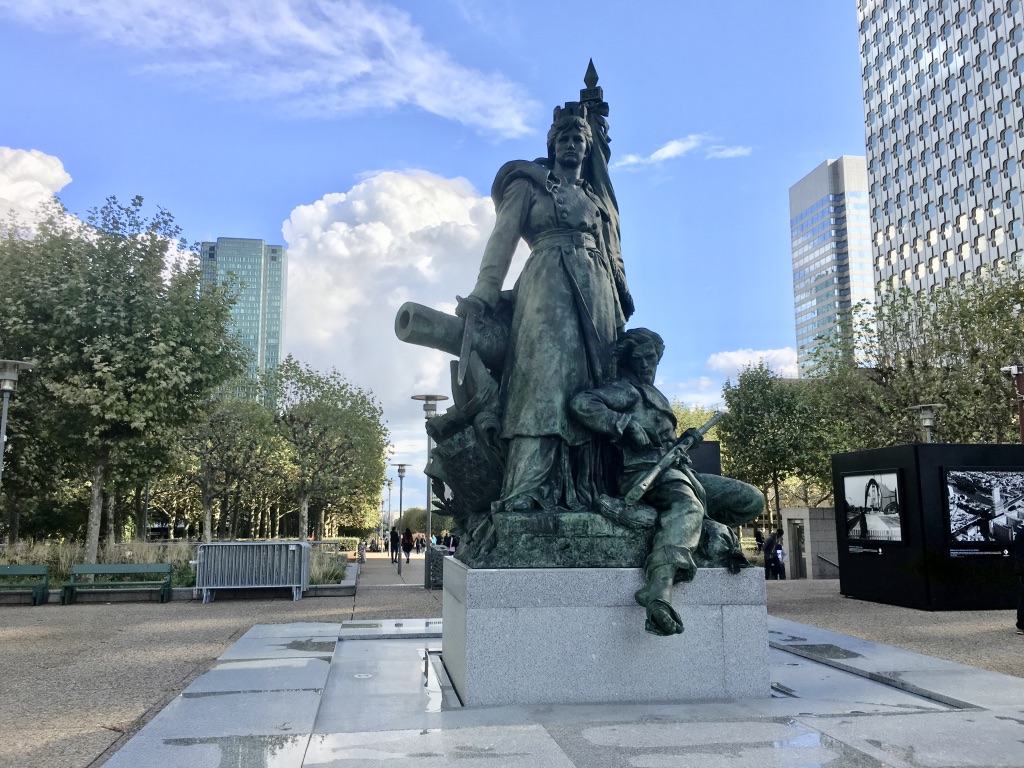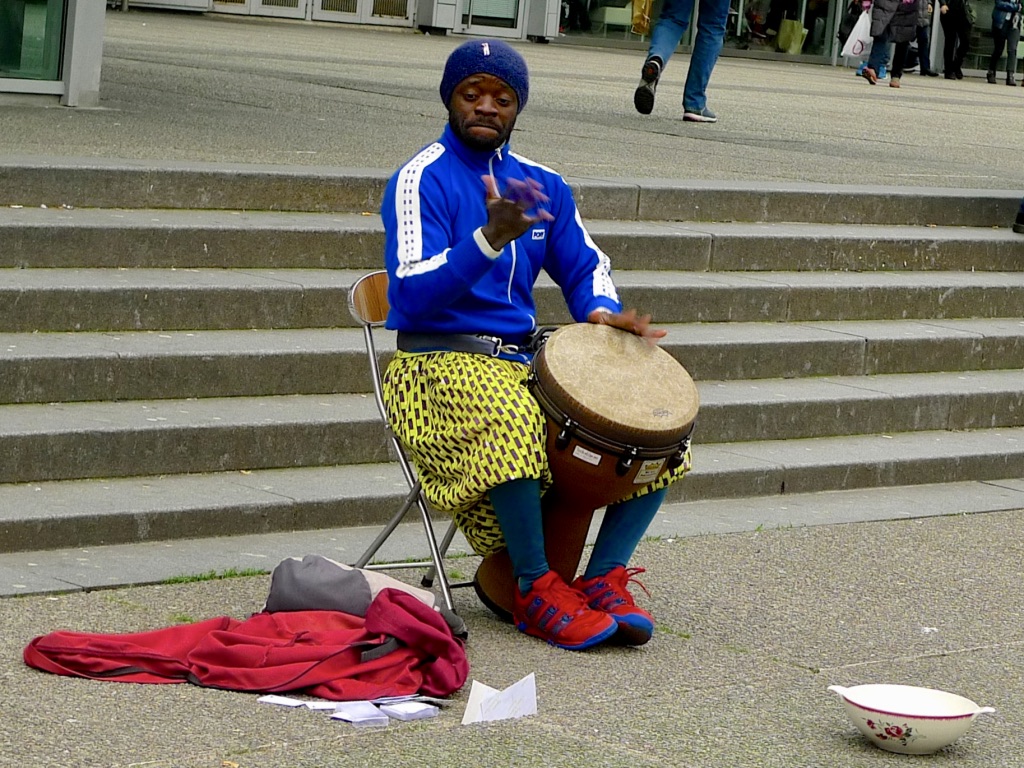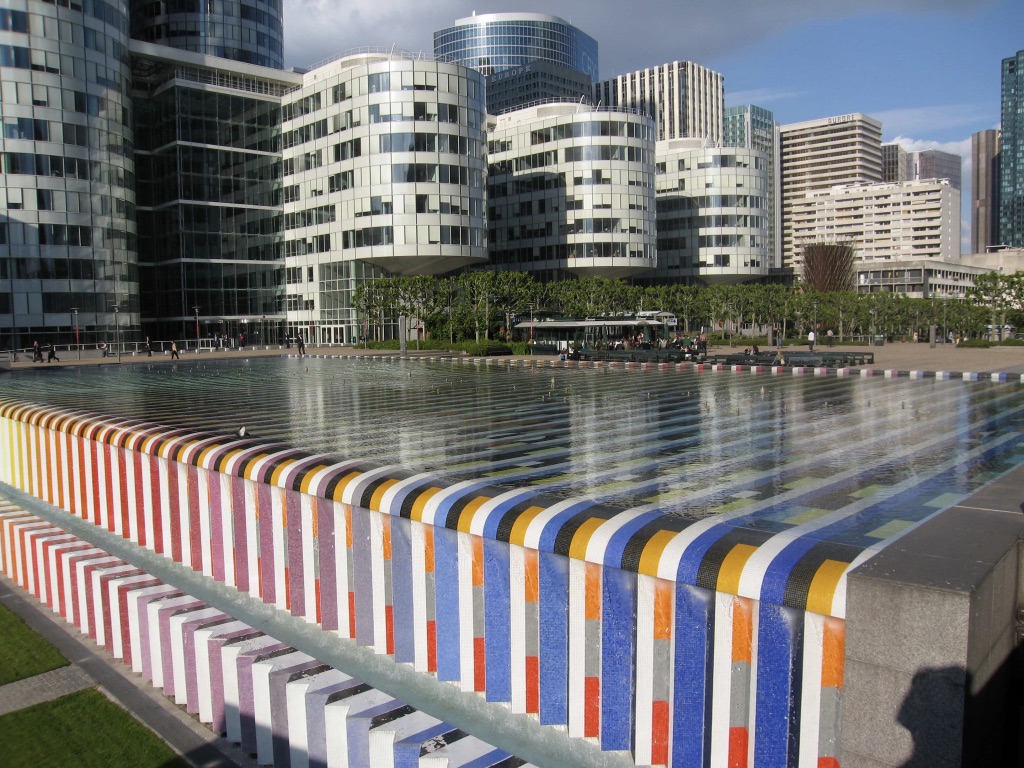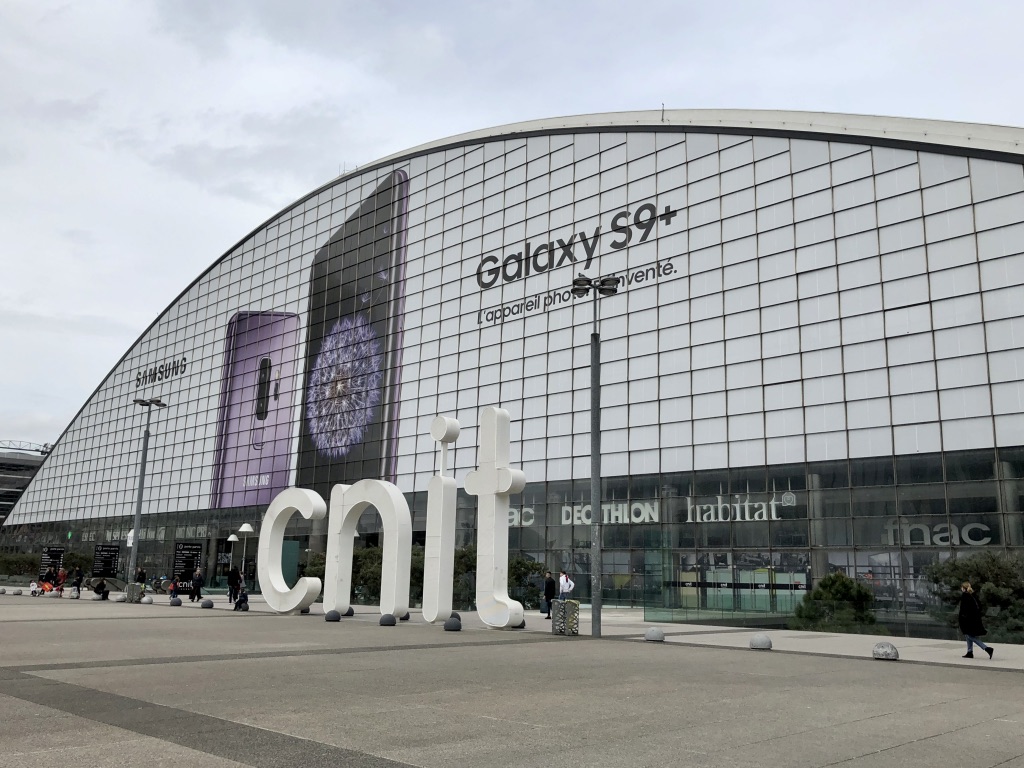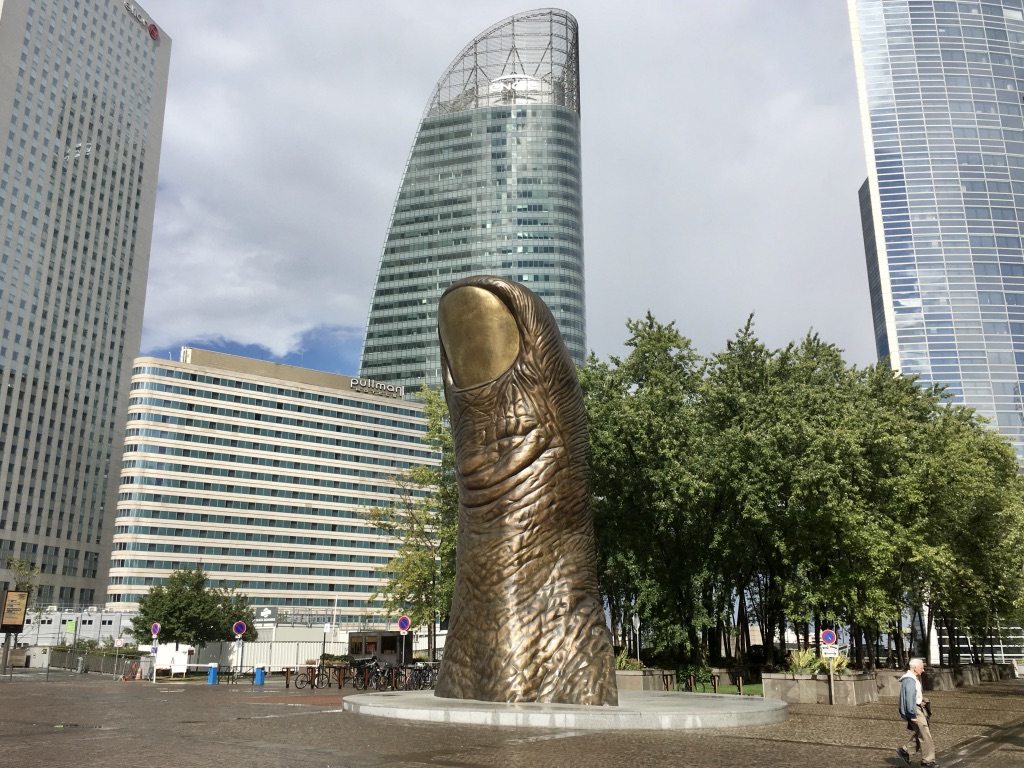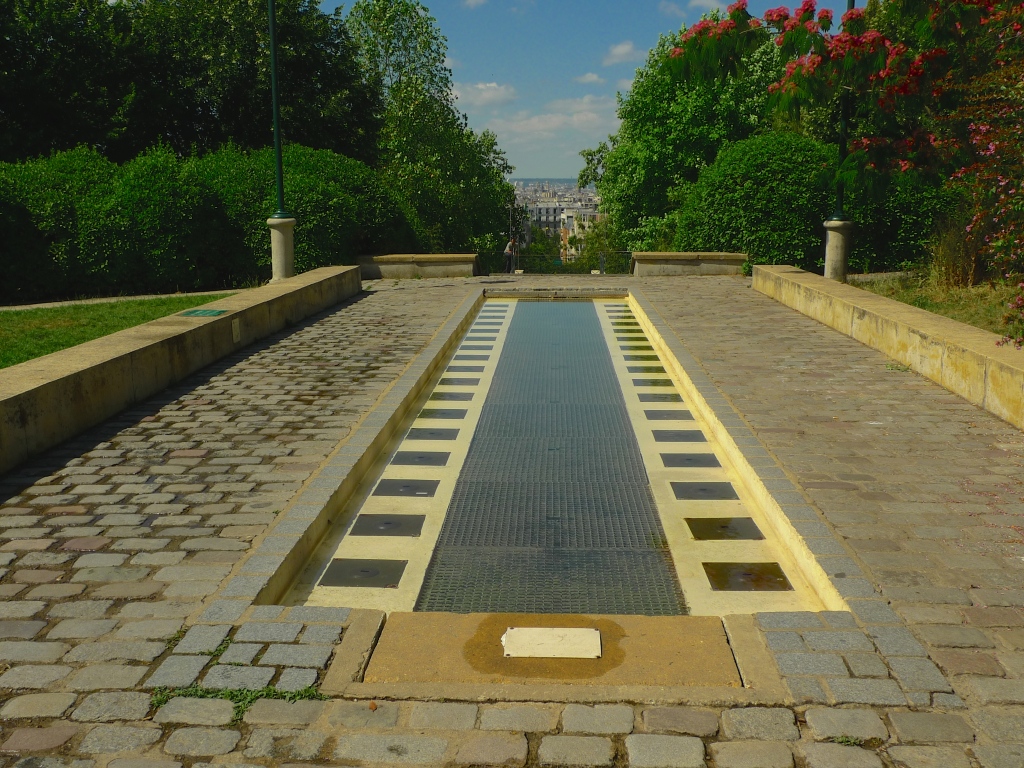La Fontaine Stravinsky and its Sounds
SET IN A SHALLOW basin in Place Stravinsky in the shadow of the Centre Pompidou, sixteen works of sculpture move and spray water into the air.
Created by the sculptors Jean Tinguely and Niki de Saint Phalle, these sculptures, collectively known as la Fontaine Stravinsky, form what is perhaps the quirkiest fountain in Paris.
La Fontaine Stravinsky was part of a larger sculptural programme, launched by the City of Paris in 1978, to build seven contemporary fountains with sculptures in different squares in the city. As well as la Fontaine Stravinsky, the project included new fountains at the Hotel de Ville and within the gardens of the Palais Royal. These were the first public fountains to be built in Paris since the fountains of the Palais de Chaillot were constructed for the Paris Exposition of 1937.
The basin containing the sixteen sculptures sits above the offices of IRCAM, the Institut de recherche et coordination acoustique/musique, an organisation devoted to promoting modern music and musicology. The founder of the IRCAM, the composer and conductor Pierre Boulez, suggested the works of the composer Igor Stravinsky as a theme for the fountain.
The sixteen sculptures therefore represent:
L’Oiseau de feu (The Firebird)
La Clef de Sol (the Musical Key of G)
La Spirale (The Spiral)
L’Elephant (The Elephant)
Le Renard (The Fox)
Le Serpent (The Serpent)
La Grenouille (The Frog)
La Diagonale (The Diagonal)
La Mort (Death)
La Sirène (The Mermaid)
Le Rossignol (The Nightingale)
L’Amour (Love)
La Vie (Life)
Le Cœur (The Heart)
Le Chapeau de Clown (The Clown’s Hat)
Ragtime (Ragtime)
Because of the IRCAM rooms below, the Fontaine Stravinsky was designed to be as light as possible with the basin being very shallow and made from stainless steel and the sculptures made of plastic and other lightweight materials.
Funding for the Fontaine Stravinsky was provided by the City of Paris who paid two million French francs for the project, which was matched by a further two million French francs from the French Ministry of Culture.
Originally, the commission for the fountain was given to Jean Tinguely, best known for his kinetic art, or sculptural machines. It was envisaged that the fountain would have been entirely composed of his black-painted mechanical sculptures but, in May 1982, Tinguely asked that brightly coloured works by his second wife, Niki de Saint Phalle, also be included. This proposal was resisted at first because it was thought that the brightly coloured works would visually overwhelm the dark works of Tinguely but, after much descussion, it was agreed that it would be a joint project by Tinguely and Saint Phalle.
I went to the Fontaine Stravinsky the other day to try to capture the different sound textures from each of the sixteen sculptures but when I arrived I found that the basin had been drained and routine maintenance work was going on. Far from being disappointing, it gave me a chance to see the inner workings of the kinetic art.
All sixteen statues move and spray water and the cables and hoses that feed them are laid along the bottom of the basin.
There are a host of cafés and restaurants in the thirteenth century rue Brisemiche running alongside Place Stravinsky so I decided to head off for something to eat while the maintenance work was being carried out.
When I returned the basin was being refilled and the sculptures were bursting into life.
Sounds of la Fontaine Stravinsky:
I walked around the perimeter of the fountain pausing to explore the sonic texture of each of the sixteen statues. Some of the textures are quite distinctive but others, the more delicate ones, tend to be overshadowed by their more raucous neighbours – but they are there if you listen very carefully.
I recorded in the evening so I was not surprised to capture the sounds of the gentlemen from the Mairie de Paris arriving in their smart, green, electric truck to replace the large translucent rubbish bags beside the fountain. I was though surprised to capture the sound of the water to the fountain being turned off for the night from a stopcock behind the neighbouring Eglise Saint-Merri. The sudden absence of running water seemed to leave a curious sonic vacuum in the air.
Exploring the Fontaine de Belleville
AS WELL AS BEING a plein-air gallery of street art, the pavilion at the top of the Parc de Belleville also affords a panoramic view across Paris.
While the Parc de Belleville vies with Montmartre for the distinction of being the highest point in Paris, the Parc de Belleville is unchallenged as the highest park in the city and the view from the top is quite spectacular.
Designed by the architect, François Debulois, and the landscaper, Paul Brichet, the Parc de Belleville covers 45,000 square meters of hillside in the 20th arrondissement stretching from rue Piat in the northeast to rue Julien-Lacroix in the southwest. It was opened to the public in December 1988.
In medieval times the fertile land and natural springs on this hillside were perfect for cultivating grapes and so vineyards appeared. From the fourteenth century onwards, taverns and guinguettes also began to proliferate. Guinguettes were drinking establishments that also served as restaurants and dance halls. Up until the mid nineteenth century Belleville was outside the Paris city limits and was exempt from the tax on alcohol so the taverns and guinguettes offering cheap drink were hugely popular.
In the mid nineteenth century a gypsum quarry was carved out of the hillside and that attracted a population of seasonal workers who worked on Baron Haussmann’s Parisian construction projects during the winter and returned home in the summer to tend their fields. Itinerant workers together with cheap drink didn’t exactly enhance the reputation of the hillside and the area was dubbed ‘insalubrious’.
In the nineteenth century this hillside was also known for the grand party organised each year for Mardi Gras. On the last day of the Mardi Gras celebrations huge crowds came to witness the ‘Descente de la Courtille’, named after the cheap taverns and restaurants that lined the rue de Belleville.
The Open-Air Theatre
Today, the Parc de Belleville has a small museum, the Maison de l’Air, designed to highlight the importance of fresh air and the problems of pollution. There is also a wooden playground for children and an open-air theatre all set against a background of some 1,200 trees and shrubs and 1,000 m² of lawn.
A feature of the Parc de Belleville that makes full use of the sloping hillside is the Fontaine de Belleville. The name is perhaps a little misleading because it’s really a water cascade rather than a traditional fountain. It falls for 100 metres down the hillside making it the longest water feature in Paris.
I went to the Fontaine de Belleville to explore the different sound textures as the water falls from the top of the park to the bottom. Although I’ve been to the Parc de Belleville many times I’ve never managed to be there when the entire water cascade has been working … and this visit was no exception. Some stretches were inexplicably dry and others were subject to construction work but I was nevertheless able to explore most of the cascade.
Sounds of the Fontaine de Belleville:
At the top of the park the cascade begins its descent in two parallel streams separated by a walkway. Each stream falls over two flights of steps into a pool at the bottom. I began recording the sounds at the foot of the pool where excess water was overflowing into a drain. Presently a little girl appeared and, bedecked in her summer dress, she jumped into the pool with a splash. This was obviously fun because she kept on doing it completely oblivious to my microphones.
Moving on, I passed part of the cascade nestling in the pavé and then I came upon more steps where the cascade again splits into two. I stopped to record the water trickling over the steps on one side.
I found these sounds particularly interesting. First, the sonic texture of the water seemed to be gentler and better defined at this point than it was further up the hill. Second, the speed of the water varied which changed the sonic profile. And third, there was a curious sound in the background which sounded a little like the rumble of thunder. On this particularly hot summer’s day I can confirm that it wasn’t thunder but rather the rumble of the water emerging from the previous section of the cascade from a hole at the back of the top step in what seemed like a procession of large bubbles. As each bubble burst the flow of water increased. I found this absolutely fascinating to listen to.
Moving on again, I became aware that this water cascade does not operate entirely thanks to gravity, it requires assistance. At the end of the pavé circle is a pool where the sounds of water compete with the mechanical sounds of the pumping system.
I recorded sounds from the edge of the pool where the sonic texture of the water changed to more of a hiss competing with the sounds of the pumping system and where the sound of occasional birdsong provided a welcome counterpoint.
I ventured down some steps to stand underneath the pool where I found the sounds of the water falling over the edge neatly relegated the sounds of the pumping system back into second place. The pumping system is required not only to assist the flow of water down the hillside but also to pump it back up to the top again. It follows therefore that the mechanical sounds of the pumping system are as much a part of the sound tapestry of the cascade as the sounds of the water itself.
This graffiti covered section of the cascade did not carry water so I could only imagine what it might sound like if it was in full flow.
Below this point a large section of the cascade was being renovated so it too was out of action, which was rather a shame because it’s the part of the cascade that usually attracts most visitors especially on a hot summer’s day. But all was not lost; this section at the bottom of the cascade leading to rue Julien-Lacroix at least was still open.
I found exploring the Fontaine de Belleville and listening carefully to its sounds a fascinating way to spend a morning.
Listening to the little girl splashing in the pool at the top and the children at the bottom doing much the same I was reminded of a line from the poem by Richard Wilbur, A Baroque Wall-Fountain in the Villa Sciarra;
“Happy in all that ragged, loose collapse of water, its effortless descent and flatteries of spray…”
Hidden Sounds of La Fontaine Médicis
LA FONTAINE MÉDICIS, or the Medici Fountain, is a monumental fountain in the Jardin du Luxembourg in the 6th arrondissement of Paris. I’ve been to it many times but early on a bitterly cold morning last week I went with a special purpose in mind, to record the sounds of the fountain.
The fountain was part of the sumptuous palace and gardens that Marie de Médicis, widow of Henry IV and regent for King Louis XIII, commissioned in the 1630’s. The palace, the Palais du Luxembourg, was based on the Palazzo Pitti and the gardens on the Boboli gardens in Florence both of which she had known from her childhood. The fountain was modelled on the grotto built by Bernado Buontalenti in the Boboli gardens. The palace was the work of architect Salomon de Brosse, but the fountain, or grotto, was most probably the work of Tommaso Francini, the Intendant General of Waters and Fountains of the King.
Fontaine Médicis in 1820
After the death of Marie de Médicis the palace and the gardens went through several changes of ownership and the fountain fell into disrepair. Napoleon Bonaparte ordered some restoration work to be done at the beginning of the 19th century but by the second half of the century Baron Haussmann’s massive urban redevelopment of Paris was in full cry and the future of the fountain was in jeopardy. Haussmann had plans to create the rue de Médicis which was to cut through the site where the fountain stood.
The French architect Alphonse de Gisors, who had already extended the Palais du Luxembourg in the 1830’s, was called upon to move the Fontaine Médicis some thirty meters closer to the palace to make way for Haussmann’s new street and in doing so he radically changed its setting by creating a 50 metre long rectangle of water bounded by an alley of trees and he also changed its appearance.
Alphonse de Gisors’ relocation of la Fontaine Médicis today
It was this rectangle of water that was of particular interest to me when I visited the Fontaine Médicis last week.
Polyphemus Surprising Acis and Galatea, by Auguste Ottin (1861)
Looking at the fountain with the giant, Polyphemus, looking down on Acis and Galatea and with Faunus, the god of the forest and Diana, goddess of the hunt (both by Ottin) looking at each other, I was absorbed by the sounds of the fountain.
At this early hour in the morning there were no people around but even so I was not alone. This duck befriended me and stayed close to me the whole time I was there. I had gone to this place to record the sounds around me and although I could hear the sounds of the water I couldn’t help wondering what this duck might hear – assuming ducks can hear.
Anxious to find out, I lowered a microphone to the same level as the duck and began to record. These are the sounds heard by the thousands, or maybe hundreds of thousands, of people who visit this place each year.
Presently, the duck leapt off the ledge onto the water below and began foraging with its head under the water. I followed by lowering a microphone under the water and I began to hear sounds that only the ducks and none of the visitors hear. Both the duck and I were close to where the water was falling over the ledge so the sounds under the water were an underwater version of the sounds above – the gurgling of the falling water as it hits and then descends below the waterline.
The duck decided to move off to a more interesting feeding ground, a clump of fallen leaves nestling on the water. I let my microphone float down to join the duck and it came to rest under the leaves where I discovered a completely different collection of captivating sounds.
I’ve put together a selection of the sounds I recorded, the sounds from above the base of the fountain, the sounds from below and the sounds from under the bed of leaves so that you can share the sonic tapestry the ducks hear.
The hidden sounds of the Fontaine Médicis:
In Homer’s Odyssey we are told that the man-eating one-eyed giant, Polyphemus, was blinded when Odysseus hardened a wooden stake in a fire and drove it into his eye. If that is so, then from his position on la Fontaine Médicis today Polyphemus will surely be more than compensated by the wonderful sounds around him both above and below the water.
If you would like to know more about the Jardin du Luxembourg you can listen to a brilliant exposition in Paris – Personal View narrated by Dr. Monique Y. Wells. I recommend it.




